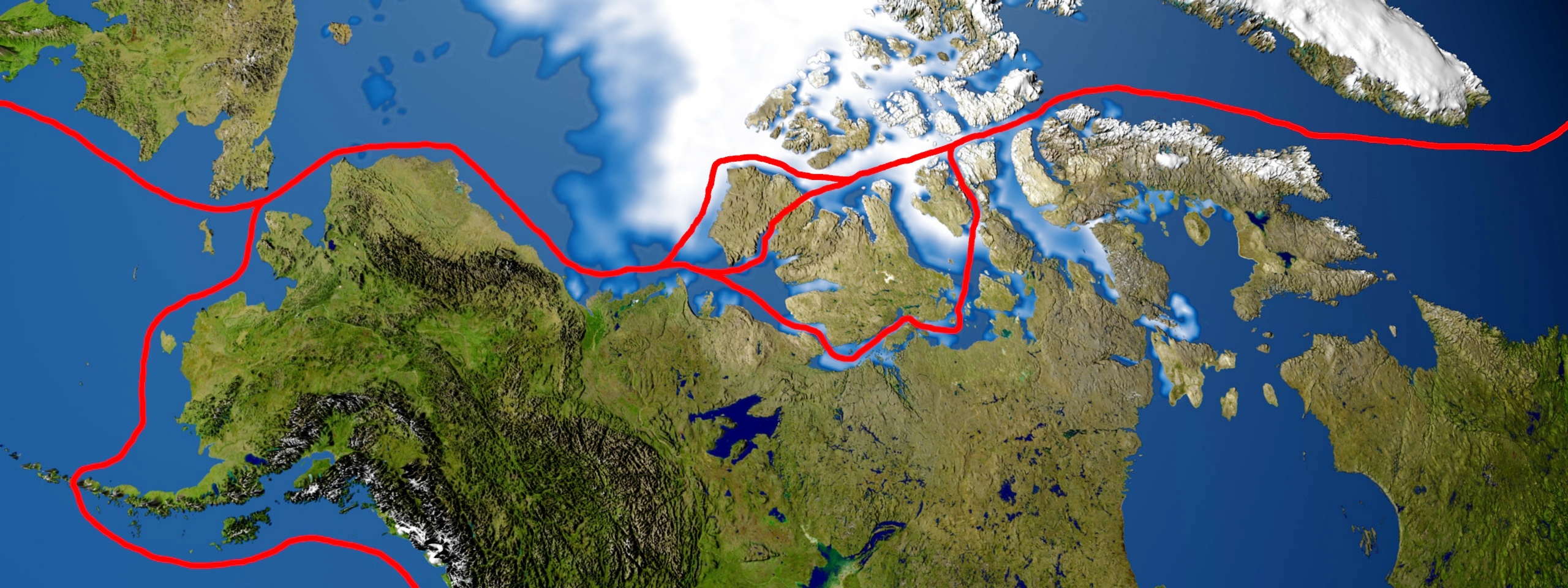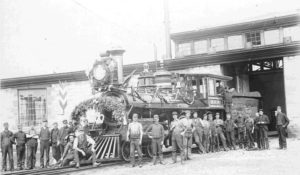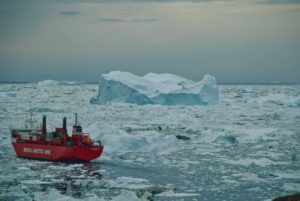The Northwest Passage and Canada’s Claim to the North
 The different routes of the Northwest Passage.
The different routes of the Northwest Passage.
“The People of Canada to-day are being taxed to pay interest on millions of dollars of fictitious capital”.
-Sir William Mulock, Member of Parliament,
In reference to the Canadian Pacific Railroad, 1895
Binding the East and West

Sir Mulock’s “fictitious capital” was the Canadian Pacific Railway (CPR), a capital investment that united Canada over 100 years ago. In 2013, it had 15,000 employees, provided transportation services across a network of approximately 20,000 kilometers , and enjoyed a net income of 875 million dollars. In defence of Sir Mulock’s critique, Canadians, at the time, had the right to be skeptical of the huge sums being invested in the CPR. It is hard to condemn Mulock’s speech to mere skepticism: the West had only recently joined the nascent confederation and the construction of the CPR presented an ambitious project across an unknown, mountainous, untamed land.
Canadians during confederate times were faced with the challenge of securing their sovereignty across an enormous area. In other words, they needed to enforce their de jure borders with de facto control. How better to do that then to create a fast, reliable method of transportation? The CPR not only brought British Columbia into Canada, but opened vast swathes of Canadian wilderness to investment and exploitation. In fact, it may very well be possible that were it not for the construction of the CPR, British Columbia would never have joined Canada.
Lessons from the Canada Pacific Railway
“Those who do not learn from history are condemned to repeat it.” George Santayana’s famous adage may be overused, but his words are timeless for a reason. The Canadian Pacific Railroad was an enormous investment. It cost a good portion of the young country’s budget, was plagued by the infamous Pacific Scandal that cost John A. Macdonald his first government, and, by some counts, it took as many as two lives per mile of track laid. But it was absolutely critical in establishing Canadian sovereignty, in securing and in making Canada a nation that spans coast-to-coast. Over 120 years later, we still have a single, unified Canada. It is clear that we have benefited from this fateful choice.
The CPR made Canada a single, connected nation along an x-axis. That hasn’t changed to this day: we are still a country defined by its x-axis, with 90% of the Canadian population living within 100 miles of the U.S. border. Now, as Canada wrestles with issues regarding its sovereignty in the North, the Canada Pacific Railway provides a valuable historical lesson. Use it, or lose it.
Canada’s Northern Claim

The Northwest Passage, a route thought mythical for centuries, and useless for a century more, is becoming viable. Climate change has caused the ice to retreat farther and farther north each summer. For the first time in history, shipping above the continent could be viable. It cuts the distance from the hungry markets of Europe to the immense populations of Asia by a third. The savings of such a route are enormous; there is a reason why early explorers risked their lives to find it. Until the Panama Canal was built, the only route was around Cape Horn, which added 12,000 kilometres to a ship’s journey. And today, the Panama Canal can cost upwards of $800,000 for the largest vessels that pass through it. Despite the steep fee, the time and distance savings are worth it.
This presents enormous opportunity paralleling Canada and the CPR over 120 years ago. Canada has to date done little to enforce its northern sovereignty. While it may hold de jure control, the movements of US and Soviet submarines in the Arctic show that Canada has little de facto power. One hundred and fifty years ago, the CPR demonstrated how a transportation network from east to west established sovereignty and developed economic potential. Today we need to develop Canada’s y-axis, and look to the North.
Investing in the Canadian North
Many Canadians view the North as sparsely populated territories, relying on federal subsidies to get by. In all honesty, that’s not too far from the reality, with the Yukon, Northwest Territories and Nunavut all heavily reliant on federal aid to make ends meet. There is a distinction that must be made here, however. The difference between subsidies and aid, and investment. The North can become a new centre of wealth and commerce, if we invest in it. The North, like the CPR, is not “fictitious capital”.

The Northwest Passage is our modern Canadian Pacific Railroad. It promises to transport billions of dollars of goods to and from markets around the world. A clear Passage could open up the furthest reaches of Canada’s north to development by enabling fast, inexpensive transportation of raw materials between the hungry Asian and European markets. It could redirect billions in trade from the Panama Canal to north of Canada. All it takes for Canada to gain from this is to claim, and enforce, its sovereignty.
The enforcement of this sovereignty is the hard part. Canada has already claimed control of the Northwest Passage, declaring that it is part of Canada’s internal waters and thus subject to Canadian control, including the right to bar passage and enforce environmental regulations. The United States, and most maritime nations with it, dispute this claim. Instead, their position is that the Passage is an international strait, and thus are all ships guaranteed the right of innocent passage. This question is far from settled, and it becomes more pressing to find an answer as the ice shrinks each year.
Binding the North and South
While the legality of the Passage is up in the air, the reality of who owns it will depend on who can control it. If Canadians decide not to take the plunge and invest in the North, then it will remain the remote, subsidized, sparsely populated place that it is. If Canadians take the plunge into those frigid waters, however, the North could become our great new frontier, full of opportunity, wealth, and ripe for investment.
It’s high time Canadians unshackled our investment from the south, and develop a country that spans from sea to sea to sea; more than east to west. Over 120 years ago, Canadians made a country by binding together its halves by rail. Now, it’s time to invest in our North, and preserve this last frontier for future generations to come.
Edited by Kathryn Schmidt
